Michael Balcon - Tumblr Posts
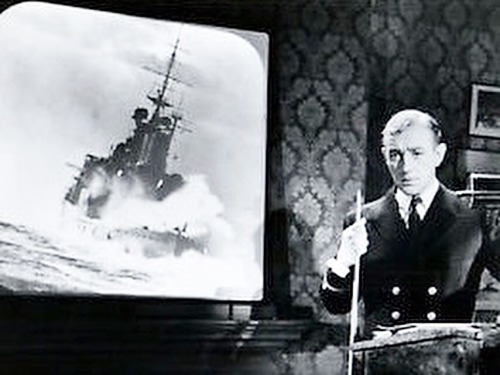
BARNACLE BILL aka ALL AT SEA (Dir: Charles Frend, 1957).
The last true Ealing comedy; 1958’s Davy, often regarded as the last, is a comedy/drama quite different in tone. Barnacle Bill, retitled All at Sea for US audiences, adheres to the ‘little guy against the system’ aesthetics of the classic Ealing comedy, although less subversively and with a little less bite than earlier films.
The marvellous Alec Guinness is on good form as Captain William Horacio Ambrose, the last in a succession of seafarers. Afflicted with seasickness, Capt Ambrose purchases a dilapidated seaside pier which he runs as a stationary luxury liner to the chagrin of the town council who wish to bulldoze the site to make way for a marina. A scene in which Guinness portrays his ancestors recalls Kind Hearts and Coronets (Robert Hamer, 1949) where he plays all 8 members of the D’Ascoyne family.
To be honest, Barnacle Bill is not as good as earlier Ealing comedies, despite its screenplay by TEB Clarke, scenarist of previous winners Passport to Pimlico (Henry Cornelius, 1949) and The Lavender Hill Mob (Charles Crichton, 1951). Perhaps director Charles Frend, an Ealing stalwart notable for Scott of the Antarctic (1948) and The Cruel Sea (1953) was better suited to drama than comedy. That said, it is not at all bad and as an example of a brand of comedy that cinema no longer produces it should be considered a minor treasure.
Check out my blog jinglebonesmovietime.blogspot.com for more reviews of vintage Ealing Studios classics!
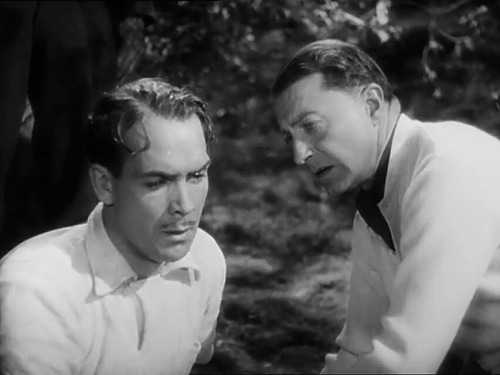
THE WARE CASE (Robert Stevenson, 1938).
The Ware Case is a creaky crime drama from the early days of the Ealing Studios; the second release from producer and studio head Michael Balcon’s tenure.
It features none of the hallmarks and belongs to none of the genres of filmmaking generally associated with later Ealing. Not a comedy in their classic mould, nor a wartime drama or social-realist piece, and is presumably a holdover from the Basil Dean era.
Based on the play by G P Bancroft, The Ware Case opens with a courtroom sequence set in the Old Bailey where we find society scoundrel Sir Hubert Ware (Clive Brook) on trail for the murder of his brother-in-law, the events leading up to which are subsequently told in flashback.
It’s lighthearted enough and some of the dialogue is humorous but a romp this ain’t. The central character of Ware is an unlikable fellow and the rest of the characters are all a little too one dimensional to really relate to. As an example of embryonic Ealing it certainly has curiosity value but, to be honest, I found the whole thing rather dull.
Robert Stevenson directs with efficiency but shows little of the flair for the fantastic he would display in his later career association with Walt Disney Productions. Responsible for Mary Poppins (1964), The Love Bug (1969) and Bedknobs and Broomsticks (1971) among others, he would become the most commercially successful film director in Hollywood.
Check out my blog jinglebonesmovietime.blogspot.com for more reviews of vintage Ealing Studios classics!

THE SHIRALEE (Dir: Leslie Norman, 1957).
One of the final productions from Ealing Films, released through MGM, The Shiralee was one of a handful of movies the company shot in Australia.
Aussie swagman Jim Macauley (Peter Finch) returns home to find his wife Marge (Elizabeth Sellars) in the arms of another man. After giving her lover a beating he takes their young daughter Buster (Dana Wilson) and hits the road. Travelling from job to job with the youngster in tow she thus becomes his ‘shiralee’, an Aboriginal term for burden. Fighting his way from one town to the next and abandoning Buster for a tryst with a shop assistant, Macauley makes for a somewhat unlikable central character and is a little difficult to sympathise with. In spite of which, Peter Finch does well in the lead.
Some comedy relief arrives in the form of Tessie O’Shea and Sidney James which, while a welcome break from the otherwise bleak narrative, represents such a shift in tone it feels like it belongs in a different movie. Presumably the Leslie Norman and Neil Paterson screenplay or, perhaps, the D’Arcy Niland novel from which it is sourced are to blame. As such, The Shiralee, while an easy film to admire, is a difficult film to wholeheartedly enjoy.
As director the underrated Norman is as efficient as ever and cinematographer Paul Beeson’s location footage from the streets of Sydney to the Outback is beautiful. A couple of Tommy Steele numbers on the soundtrack was a pleasant surprise.
While not among the very best work of Leslie Norman or Peter Finch, The Shiralee still has much to recommend it, from its beautifully shot locales to its stellar cast. A commendable effort to expand the range of the already dying Ealing Studios but not an entirely successful one.
Check out my blog jinglebonesmovietime.blogspot.com for more reviews of vintage Ealing Studios classics!
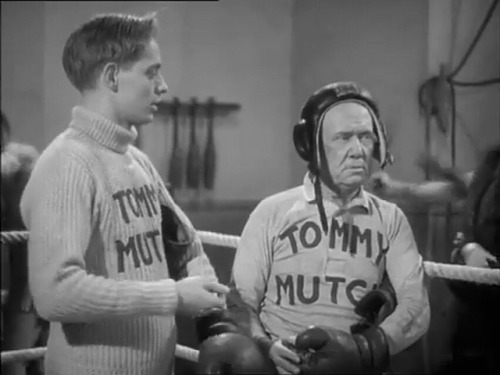
Movie number 64: There Ain’t No Justice (Pen Tennyson, 1939).
A lightweight drama from Ealing’s early years, There Ain’t No Justice stars Jimmy Hanley as mechanic turned boxer Tommy Mutch. After a promising start to his career Mutch quits fighting on learning his bouts are fixed. He later returns to the ring in order to pay a family debt but refuses to take a dive as demanded by a corrupt manager.
Hanley made a career from playing amiable types but is woefully miscast here. As a fighter he is unconvincing in both his physicality and his performance. This unfortunate casting is detrimental to an already dramatically weak picture. It is further hampered by the broad ‘cockerney geezer’ stereotypes of the supporting characters.
Directed by Alfred Hitchcock’s former Assistant Director Pen Tennyson, it is for the most part, not up to the standard of even Hitchcock’s weakest efforts. However, one scene depicting an attempted suicide displays a brilliant use of editing to create tension and is so good it feels like it belongs in a different film. This sequence alone makes the movie worth watching.
Tennyson directed two further, more distinguished movies: The Proud Valley (1940) and Convoy (1940), both at Ealing. He was tragically killed in a plane crash in 1941, ending a career which showed much early promise.
Released the same year as the pugilist classic Golden Boy (Rouben Mamoulian), There Ain’t No Justice is nowhere near as good a movie. Indeed, it’s not very good at all. It lacks the authenticity to appeal to boxing fans and the dramatic impetuous to appeal to movie fans. Worth a look for Ealing completists or for any admirers of Mr Hanley but markedly less rewarding for casual viewers.
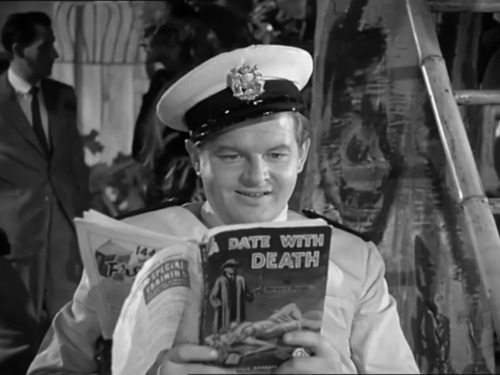
Movie number 68: Who Done It? (Basil Deardon, 1956).
Who Done It? is a late period Ealing comedy starring popular TV comic Benny Hill, directed and written by Ealing stalwarts Basil Deardon and TEB 'Tibby' Clarke, respectively.
Hill stars as Hugo Dill, a disillusioned ice show sweeper with an obsession for pulp detective fiction. After winning £100 in a detective magazine competition Dill sets himself up as a private investigator. He duly becomes entangled with political saboteurs whom he unwittingly aides in an assassination attempt. Meanwhile becoming romantically involved with aspiring showgirl and strongwoman Belinda Lee.
Yes, the plot is ridiculous. But, more importantly, it is funny. It is certainly slapstick of the broadest kind, but those expecting Hill's brand of saucy (some would argue sexist) seaside postcard humour will be disappointed; this is purely innocent stuff and the better for it. Even the burgeoning romance between Hill and Lee is a rather chaste affair.
Basil Dearden was one of the most prolific Ealing directors, although perhaps not the obvious choice for Who Done It? Helmer of the acclaimed dramas The Captive Heart (1946) and The Blue Lamp (1950), he rarely turned his hand to comedy and one would assume it was not his forte but for the excellent League of Gentleman (1960), produced by Ealing head Michael Balcon a year after the studio's demise. 'Tibby' Clarke on the other hand had proved himself an excellent comedy writer as scenarist of the bone fide Ealing classics Hue and Cry (Charles Crichton, 1947) Passport to Pimlico (Henry Cornelius, 1949) and The Lavender Hill Mob (Charles Crichton, 1951). Who Done It? doesn't rank among Clarke's best work but is nonetheless highly acceptable second tier work from a screenwriter who rarely wrote a bad script.
Who Done It? in no way represents the best of the Ealing Studios, yet neither is it the failure that its relative obscurity would suggest. It is well worth seeking out, especially for fans of vintage British cinema. Read an unedited version of this review and reviews of other classic Ealing Studios films on my new blog jinglebonesmovietime.blogspot.com
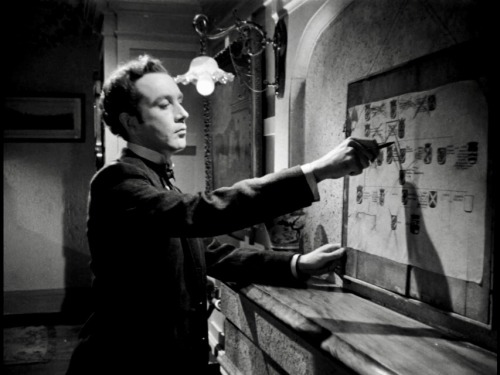
KIND HEARTS AND CORONETS (Dir: Robert Hamer, 1949).
1949 is the year that cemented the Ealing Studios’ close association with comedy. This year saw the release of three bona fide classics: Passport to Pimlico (Henry Cornelius), Whisky Galore (Alexander Mackendrick) and lastly Kind Hearts and Coronets.
Dennis Price stars as Louis Mazzini, only son of a disinherited heir to the aristocratic D’Ascoyn family, dispossessed for marrying an Italian singer deemed below her status. On his mother’s death he vows to take revenge on the family and sets out to murder the eight D’Ascoyns who stand between him and dukedom.
Price delivers a career best performance as Mazzini, cool and callous, yet charming enough to elicit audience sympathy, as he dispenses with the various D'Ascoyns. Excellent support comes in the form of Valerie Hobson and Joan Greenwood as rival love interests and an astonishing performance by Alec Guinness as the eight D'Ascoyns on Mazzini's hit list. The talented Robert Hamer directs with a light touch which never sees the movie descend into bad taste of farce.
The astute screenplay by Hamer and John Deighton, from a Roy Horniman novel, is both darkly cynical and witty and 70 years after release it remains, arguably, the blackest of black comedy scripts to reach British cinema screens.
In this respect it is unique among the Ealing comedies. Certainly it conveys the social commentary of its stable mates but lacking the gentle morals of say Passport to Pimlico or The Man in the White Suit (Alexander Mackendrick, 1951) and their reflection on post-war mores. Rather, its period setting allows for a biting critique of an outdated class system and the notion of inherited privilege.
While initially dismissed by some critics as too dark, Kind Hearts and Coronets is now widely considered the greatest of the Ealing comedies. It is difficult to think of any other movie so simultaneously dark yet delicate. Expertly performed and beautifully told; I would recommend this masterpiece of a movie to those with even the slightest interest in the cinema.
Visit my blog JINGLE BONES MOVIE TIME to read an unedited version of this review and reviews of other Ealing Studios classics! Link below.
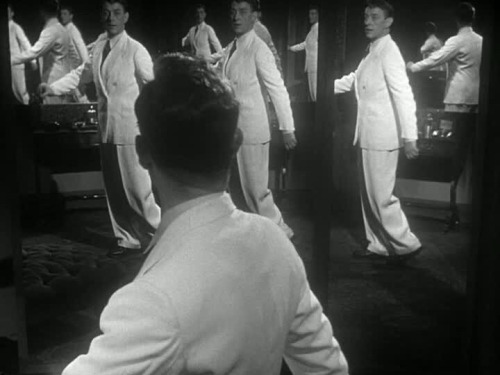
THE MAN IN THE WHITE SUIT (Dir: Alexander Mackendrick, 1951).
Ealing Studios were on fine form in 1951, producing two classic comedies. The Lavender Hill Mob (Charles Crichton) released in June, was followed two months later by possibly the greatest Ealing comedy of all, The Man in the White Suit.
Set in the textile mills of the north of England, The Man in the White Suit tells of Sidney Stratton (Alec Guinness), a research chemist who delivers a new wonder fabric. Indestructible and dirt repellent, the miracle fabric initially has Sidney lauded a genius. However, once the ramifications of such a product become clear, both mill owners and trade unions are keen to suppress Sidney and his invention.
In some repects, The Man in the White Suit in atypical of the Ealing Comedies. It shares with the others the broad theme of the individual vs the Establishment, but here seems to be taking a swipe at trade unions and the common man. In actuality its view of big business and commercialism is just as critical. Yet here, the 'little guy against the system' is a more ambiguous figure than usual. Although Sidney's noble ambition to clothe the world in indestructible fabric is a commendable one, ultimately the price of doing so would come at too great a cost. As his landlady remarks "What's to become of my bit of washing when there's no washing to do?" On the flipside of this is the wealthy mill owners whose greed sees them clamouring for Sidney's invention before attempting to suppress it, initially with bribes, then with more underhanded means. Business and labour eventually side with each other as poor Sidney is chased through the dark streets with his suit glowing luminous white! While the audience sympathy undoubtedly lies with Sidney, we are not too sorry at his inevitable downfall.
Thankfully, social commentary does not get in the way of this being a very funny film. The astute screenplay by John Dighton, Roger MacDougall and Alexander Mackendrick nicely balances the two opposing sides of industry with equal satirical bite. Mackendrick directs at brisk pace, creating a real feeling of suspense in the final moments.
Alec Guinness, arguably the greatest comic actor all time, is excellent here. His childlike optimism offsetting the cynical nature of the film. While Sidney’s blinkered belief in his invention is foolhardy, Guinness never portrays him as foolish, eliciting audience sympathy for a character who could have easily evoked derision. Reunited with Guinness is his Kind Hearts and Coronets (Robert Hamer, 1949) leading Joan Greenwood, equally effective here as his chaste love interest.
The Man in the White Suit walks a thin line between cynical satire and offbeat whimsy, but it does so with ease. I would argue it is the greatest of the Ealing comedies and an absolute comedy masterpiece. Highly recommended to anybody with the slightest semblance of a sense of humour.
Check out my blog JINGLE BONES MOVIE TIME for more reviews of classic Ealing Studios movies!
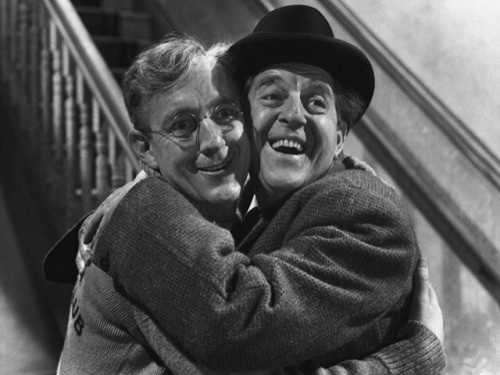
THE LAVENDER HILL MOB (Dir: Charles Crichton, 1951).
A classic comedy from the golden age of the Ealing Studios.
Mild mannered bank clerk 'Dutch Holland' (Alec Guinness) concocts a daring gold bullion robbery. Engaging the help of souvenir maker Al Pendlebury (Stanley Holloway) they execute the crime and disguise the gold in the form of miniature Eiffel Towers. However, things do not go to plan when a casement of the souvenirs is accidentally opened and sold to group of British schoolgirls.
Released the same year as The Man in the White Suit (Alexander Mackendrick), The Lavender Hill Mob is less satirical, but equally humorous as it gleefully sends up Ealing’s own popular crime dramas such as The Blue Lamp (Basil Dearden, 1951) and Pool of London (Basil Dearden, 1951). Director Charles Crichton effortlessly apes the quasi-documentary realist approach of those movies. The heist itself is as thrilling as it is humorous and makes excellent use of its real life London backstreets and warehouse locales. Crichton also manages to out Hitchcock Hitchcock with a vertigo inducing sequence which sees Guinness and Holloway make a dizzying descent down the steps of the Eiffel Tower. Significantly for a British film of the era, it was rewarded by the American Academy, winning the Best Original Screenplay Oscar for TEB Clarke’s excellent script.
As the criminal mastermind with the meek exterior, Guinness delivers another excellent performance; eliciting audience sympathy for a character which could have easily evoked apathy. Stanley Holloway is equally effective in the less showy role of co-conspirator. They make for a winning comedy team here, ably supported by Sidney James and Alfie Bass as fellow Mob members.
The Lavender Hill Mob made more impact internationally than any other Ealing film. Its theme of longing to escape from day to day drudgery is clearly a universal one. Like the best of the Ealing comedies it has hardly dated, despite its obvious post-War trappings.
Excelling in all areas: writing, directing and acting, The Lavender Hill Mob is another Ealing masterpiece.
Check out my blog JINGLE BONES MOVIE TIME for a longer, more in-depth review of The Lavender Hill Mob! Link below.
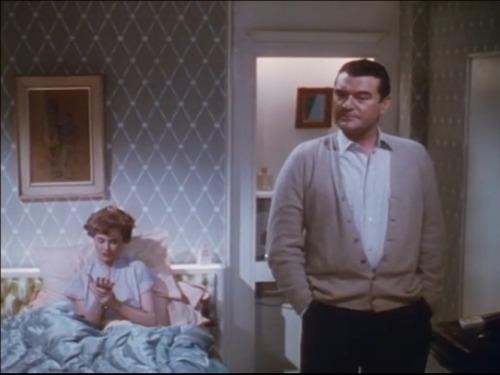
TOUCH AND GO (Dir: Michael Truman, 1955).
Jack Hawkins makes a rare foray into comedy in this lightweight, late period effort from the Ealing Studios.
Following a disagreement with his boss, furniture designer Jim Fletcher (Hawkins) makes the snap decision to emigrate to Australia. Less than enthusiastic are his wife Helen (Margaret Johnston) and teenage daughter Peggy (June Thorburn) with concerns for the family cat and Peggy's new sweetheart.
Aside from the excellent The League of Gentlemen (Basil Dearden, 1960), comedy was not really Jack Hawkins’ forte. Although an otherwise fine dramatic actor, he often seemed a little uncomfortable in domestic situations and was at his best as stoic men of action. Oddly, Hawkins was far more convincing as a naval officer or a pilot than he ever was as husband or father and his performance here is rather broad and lacking in subtlety. In fairness, he is given little to work with in a role which involves little more than expressing exasperation at his wife and daughter.
Scenarist William Rose was an accomplished comedy writer; responsible for Ealing classics such as The Maggie (Alexander Mackendrick, 1954) and The Ladykillers (Alexander Mackendrick, 1955) and later co-scripting Hollywood epic It’s a Mad, Mad, Mad, Mad World (Stanley Kramer,1955). So it is all the more surprising that Touch and Go doesn’t quite deliver the goods. Its attempts at humour are somewhat laboured and never raise the hoped for big laughs in a plot which offers no surprises; the denouncement can be guessed within the first 10 minutes. Which is not to suggest the movie is without merit. It ambles along nicely enough and certainly provides some mild chuckles. The muted colour palette is attractive and the atmosphere is cosily nostalgic.
Viewed today Touch and Go is a quaintly dated period piece. It does not rank among the greatest of Ealing Studios movies but neither is it a complete failure. Ultimately, it is just a little undistinguished and lacks the bite of other Ealing comedies. Still, it is a pleasant enough time waster that will certainly be of interest to Ealing completists.
100+ movie reviews now available on my blog JINGLE BONES MOVIE TIME. Link below.